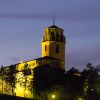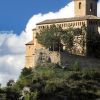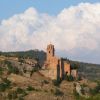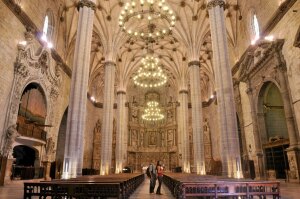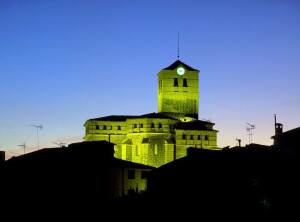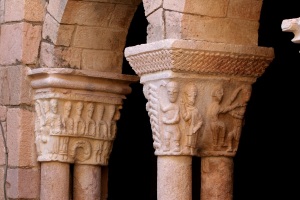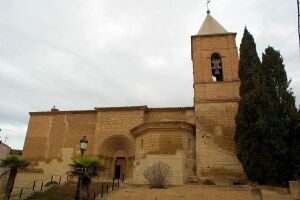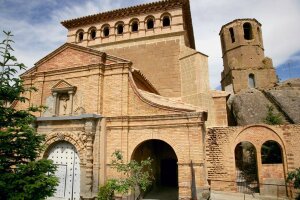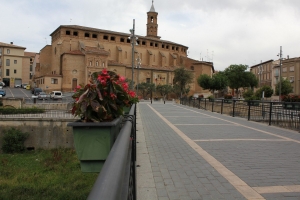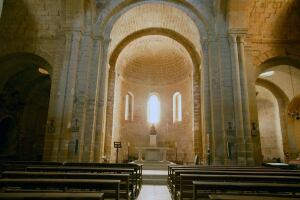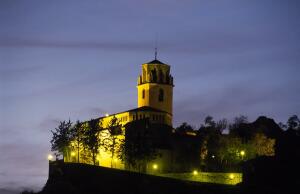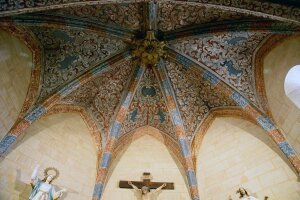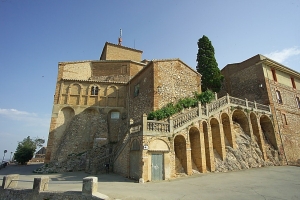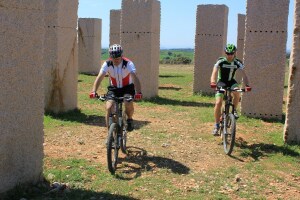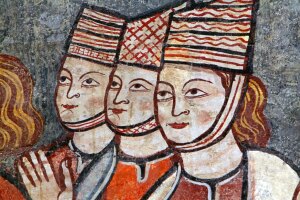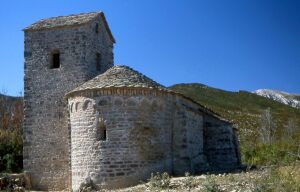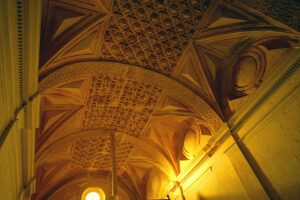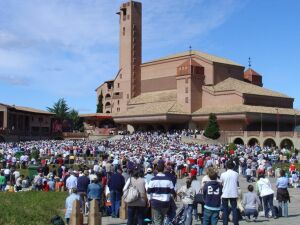In the highest part of the village there is an isolated crag known as “Peña de la Espada” because it resembles the shape of a sword (espada.) Legend says that the cross cut from the rock at its summit indicated the southern limits of the old Kingdom of Sobrarbe, the area which extended north past the Sierra de Arbe or Sobre Arbe (above Arbe) hence the name. Next to this it is still possible to make out the remains of an old castle, once under Muslim rule and then Christian after the battle of 1094.
If the castle represented the sword, i.e. the military and civil power, then the church was built at its side to represent religious power and faith.The small Romanesque temple that preceded the current building must have seemed small, gloomy and dark to 16th century man. The small dimensions and changes in taste resulted in the Town Council ordering the construction of a new, much larger church for a prosperous and growing population. Judging by the dimensions and quality of the building, it must have required a huge economic investment.
It is still possible to make out scant features of its Romanesque origins in the walls of the tower; in the first section the windows of the old medieval bell tower can still be seen.
Naval had sufficient income to warrant a work of such importance thanks to the production of salt from its millennial salt beds. The sale of salt from Naval had extended across the whole of Aragon since the start of commerce in medieval times.
During the decade of 1580, an excellent stone mason called Joan Torón, well experienced in stone work and the art of architecture, was placed in charge of the construction of this church.
The final decades of the 16th century saw the rise of the monumental new church, constructed with stout walls to overcome the different levels of the rocky crag on which it stood. It follows all the norms of Gothic architecture from that era. Its nave and polygonal east end are covered with magnificent stellar vaults, concentrating the decorative richness to the church’s interior. Windows were placed at the top of the walls to highlight the importance of the vaulted ceilings.
The Gothic decoration of the main entrance was renewed with the addition of a decorative Renaissance mask based on the principals of Ancient Art.



